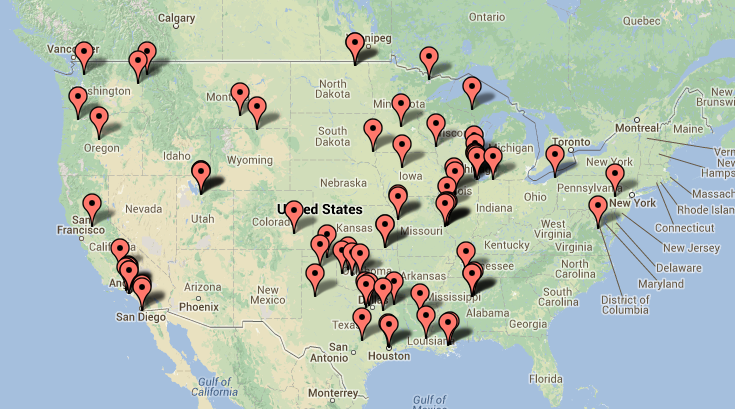While working on biographies for 1st Battalion, 24th Marines, I became interested in the addresses of those who died in action.
Every Marine listed someone as his next of kin – wives and parents were the most common, but some named siblings, cousins, guardians, or just friends. These were the individuals who would be notified if anything happened to their Marine, up to and including the dreaded Western Union telegram with the news that he had been killed in action. The scope of the war was such that everybody in the United States knew someone in the service, and as the fighting continued, more and more knew someone that had lost their life.
While taking down the addresses of 1/24’s casualties, I started checking them on Google Earth to see if their houses were still there. In many cases, modern buildings had replaced the 1940’s structures; in some, streets had been re-named, blocks razed, or towns expanded to engulf rural areas. One Marine who lost his life on Saipan hailed from Mount Trumbull, Arizona – now a ghost town. Another Iwo Jima casualty gave his address as the American Embassy in São Paulo.
And then I found PFC John Joseph Cummings. He had died on Iwo Jima, but he had lived in my Brooklyn neighborhood. His boyhood home was five blocks from my apartment. I rode my bicycle past PFC Norman R. Bell’s home on my way to work, and past Corporal William G. Dore’s address on my way back every day. I had been to visit my own ancestor’s apartment in Manhattan many times, but those were specific trips. I passed these three sites every day, and that gave me pause.
I plotted out the addresses of the battalion’s 300 dead on a map, and was surprised by how many of them lived in close proximity to each other. It made me wonder how many had been friends before the war – had they gone to school together, attended the same birthday parties, chased after the same girls? Did they enlist together, or did they go separately and wind up in the same unit purely by chance? Stories of foxhole buddies abound, but the thought of a peacetime connection between some of these young men, none of whom came home, is somehow more tragic – yet another bond severed by the war. Seeing the number of markers on a map drove home just how badly the unit suffered during the war, and I’d only accounted for the dead – the wounded would require nearly four times as many markers.
With that in mind, I decided to start a similar project for Missing Marines, starting with 1941.
There are 74 men accounted for so far – most were aboard the USS Arizona – and they are overwhelmingly midwestern, with Texas and Oklahoma leading the other states. Three of the 74 were from Salt Lake City. As the map expands, there will surely be other coincidences to notice and to ponder.
Perhaps a street will sound familiar, or the name of a small town you’ve passed through. These are the locations the Marines fought for when idealistic, described to friends when nostalgic, and missed terribly every day. Not a single one made it back.
The Map will eventually have its own page. For the time being, you can see the work in progress here.
